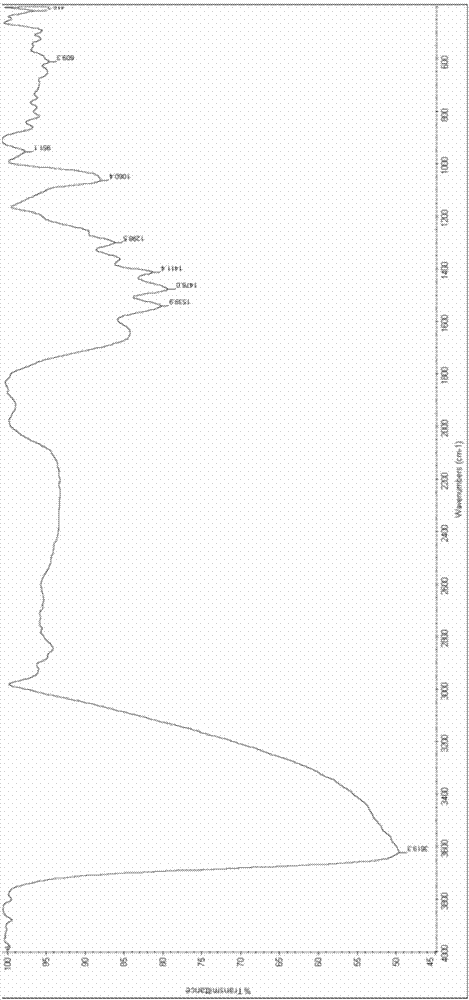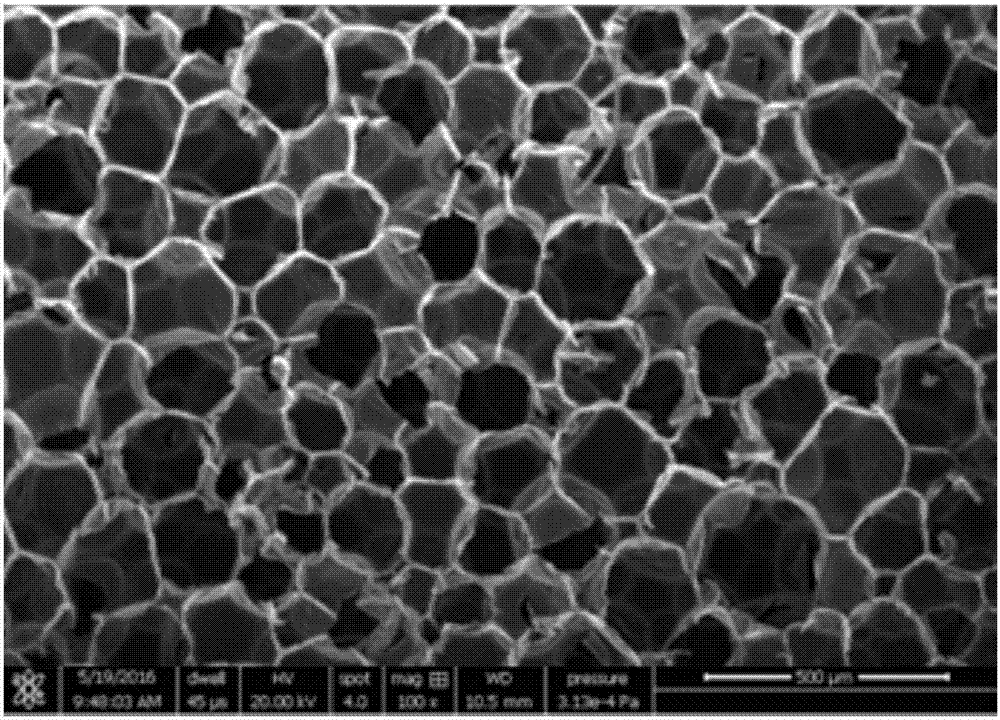Organic alcohol amine salt compound and application thereof serving as foaming agent
An alkanolamine salt compound and the technology of the compound are applied in the field of organic alkanolamine salt compounds and their use as a foaming agent, and can solve the problem of uneven distribution of cells, influence on the strength performance, thermal insulation properties, and cell size of foamed materials. unevenness etc.
- Summary
- Abstract
- Description
- Claims
- Application Information
AI Technical Summary
Problems solved by technology
Method used
Image
Examples
Embodiment A-1
[0280]The water of 1.4 tons of ammonium carbamate (molecular weight 78.07), 1.2 tons is joined in the stainless steel autoclave with cooling water jacket (referred to as reactor in other embodiments below), start agitator, make carbamic acid Ammonium is dissolved, and the reactor is purged with nitrogen, then the reactor is closed and stirred, and a total of 1.90 tons of propylene oxide (molecular weight 58.08, boiling point 34° C.) is introduced to control the feed rate of propylene oxide so as to control the pressure in the reactor Not higher than 0.6MPa, slowly raise the temperature under constant stirring, control the temperature below 70°C and react for 15 hours, the reaction is completed, slowly lower the temperature to 50°C and control the vacuum degree below 600mmHg (preferably lower than 500mmHg) Slowly remove unnecessary water (for example to reach a water content of less than 20wt%) and unreacted propylene oxide, then release the vacuum, release the reactant after co...
Embodiment A-2
[0285] 1 kg of hydrazine carbamate and 0.9 kg of water were added to the reactor, dissolved under stirring for 30 minutes (allowing the presence of a small amount of undissolved hydrazine carbamate), the reactor was purged with nitrogen, and then 1.8 kg of cyclic Put oxypropane into a transparent quartz glass reactor, start stirring, slowly raise the temperature under constant stirring, control the temperature between 50-70°C, and carry out the reaction under the condition that the pressure is not higher than 0.6MPa. When the reaction lasts for about 2 hours There is a wonderful phenomenon left and right: the turbid and opaque mixture instantly turns into a transparent or clear solution, and the reaction continues for 5 hours, and then the temperature is lowered to 50°C, and part of the water and unreacted epoxy are released under a vacuum of 600 mm Hg. Propane, the product is released after cooling down to below 40°C. The reaction time is sufficient to ensure that the reactio...
Embodiment A-3
[0287] Add 1.4 tons of ammonium carbamate, 0.8 tons of ethylene glycol, and 1.0 tons of water into a stainless steel reactor with a cooling jacket, start stirring, so that the ammonium carbamate is slowly dissolved (not necessarily completely dissolved), and the reaction After the system is treated and protected with nitrogen, it is heated up, the temperature is controlled at 45-70°C, and the pressure is controlled not to exceed 0.6MPa. Then, a total of 1.25 tons of ethylene oxide (molecular weight 44.05) is slowly added in batches. The temperature is 45-70°C, the pressure is below 0.6MPa and the reaction is stirred for 5 hours, then the temperature is lowered to 50°C, and unnecessary water (such as reaching a water content lower than 30wt%) and unreacted epoxy is removed under reduced pressure at 600mHg Ethane, the product is released after cooling down to below 40°C, and compound A-3 is obtained. The viscosity is about 245, pH=9, and the decomposition temperature of compound...
PUM
| Property | Measurement | Unit |
|---|---|---|
| Viscosity | aaaaa | aaaaa |
| Viscosity | aaaaa | aaaaa |
| Decomposition temperature | aaaaa | aaaaa |
Abstract
Description
Claims
Application Information
 Login to View More
Login to View More - R&D
- Intellectual Property
- Life Sciences
- Materials
- Tech Scout
- Unparalleled Data Quality
- Higher Quality Content
- 60% Fewer Hallucinations
Browse by: Latest US Patents, China's latest patents, Technical Efficacy Thesaurus, Application Domain, Technology Topic, Popular Technical Reports.
© 2025 PatSnap. All rights reserved.Legal|Privacy policy|Modern Slavery Act Transparency Statement|Sitemap|About US| Contact US: help@patsnap.com



